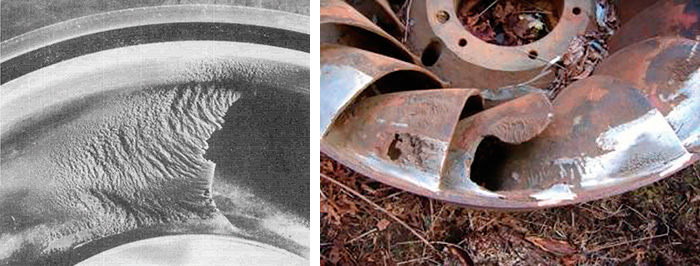If it sounds like cavitation, feels like cavitation and is believed to be cavitation, it may or may not be cavitation. The "cavitation" noise we often hear from problematic pumps results from bubbles passing through the pump. But what kind of bubbles? Knowing the differences between cavitation and air entrainment is the first step to preventing equipment damage. The more classic cause of these noises is reduced suction pressure that falls below the necessary level to suppress transformation of fluid from the liquid phase to vapor phase. Initially, just a few bubbles form because of reduced pressure. This first stage is called incipient cavitation. It can be detected with special instrumentation, but it is not audible to a human ear. If pressure is reduced further, more bubbles form and grow into larger bubbles, which continue toward the impeller blades. The blades begin to impart energy to the fluid mixture and bubbles, in full accordance with the pressure-volume relationship, causing the bubbles to transform back to liquid. Such transformation is rapid, and the bubbles disappear quickly in an implosion-like manner. While it affects only a small volume of the fluid stream, the inrush of the surrounding liquid into a disappearing vapor bubble is a violent, high-energy, high-pressure event. Some of the bubbles collapse near the walls of the impeller (slightly past the inlets where pressure starts to increase and is already above the vapor pressure), causing the metal to chip away and form cavities. The frequency of the collapse is random but generally is around 15,000 to 20,000 hertz (Hz). The energy is released onto the internal parts, causing pulsations and rotor vibrations. These, in turn, damage the seals and bearings.
 Images 1 and 2. Examples of cavitated impellers (Images courtesy of the author)
Images 1 and 2. Examples of cavitated impellers (Images courtesy of the author)
